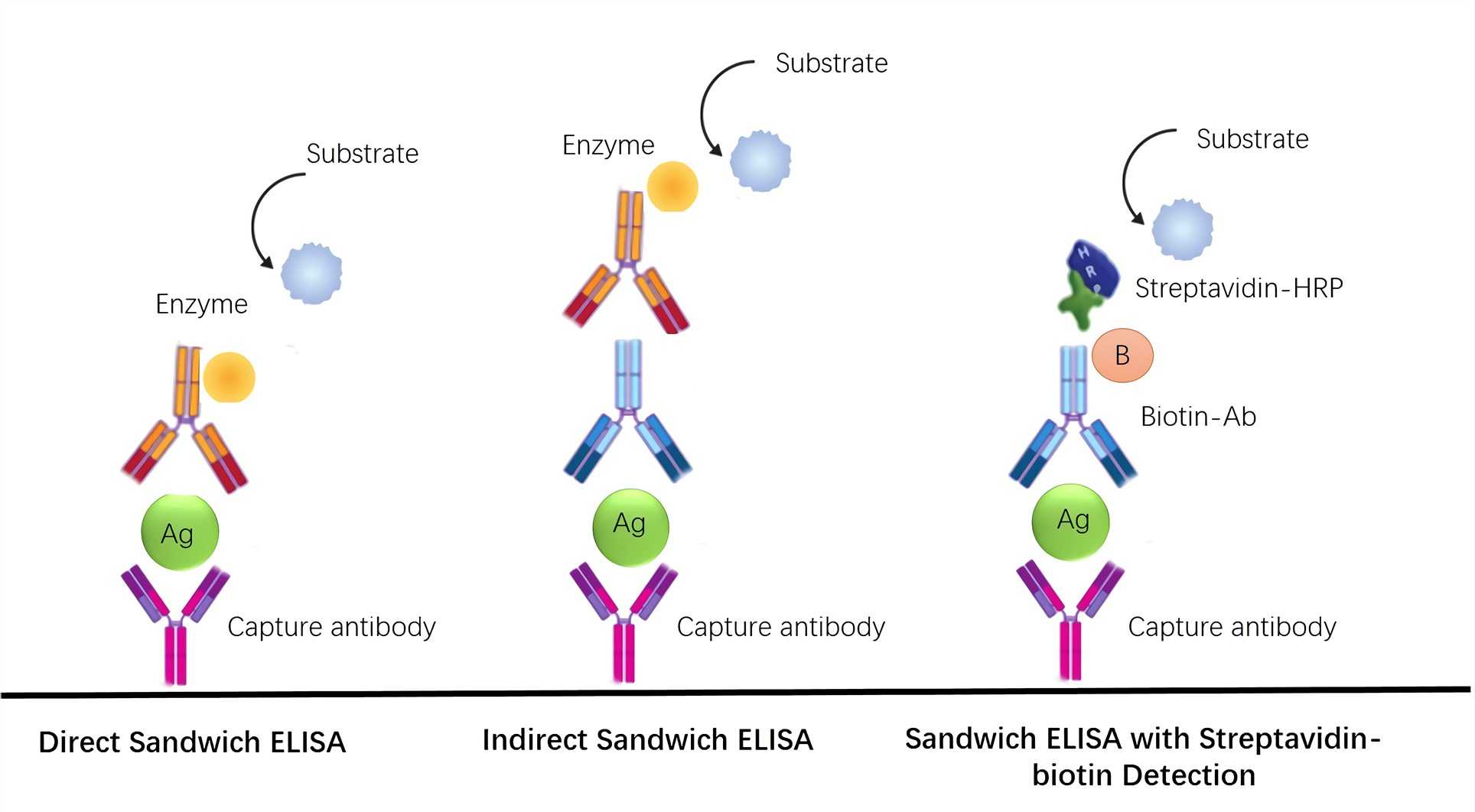Indirect ELISA
The assay is usually carried out in two stages. Like Direct ELISA, the antigen is coated to a polystyrene multicell plate. In the first stage, unlabeled primary antibody is introduced into the well which is specific to an antigen.
In the second step, an enzyme-labeled secondary antibody (often a polyclonal antibody) is placed in the well. Nowadays, you can also buy bdnf elisa kit online from various sources.
The advantages of indirect ELISA include increased sensitivity because more than one labeled antibody is used to bind to the primary antibody. The experimental procedure can be designed flexibly according to the research requirements, taking into account the steps in the indirect ELISA.

Image Source: Google
ELISA sandwich
This test is very effective in detecting and measuring sample antigens. This assay is suitable for antigens containing at least two antigenic epitopes that can bind to antibodies. Both monoclonal and polyclonal antibodies are often used as capture and detection antibodies in sandwich ELISA systems.
Antigen quantification occurs between the two antibody layers, which is why this method is called sandwich ELISA. This test is more sensitive and specific than direct or indirect ELISA, which is up to 2 to 5 times.
The difficulty with sandwich ELISA lies in the optimization and selection of the antibody pair being tested. This ensures that the selected antibody recognizes different epitopes on the target protein without interfering with binding to other antibodies. As this is a high-precision analysis, the sample should not be cleaned prior to analysis.